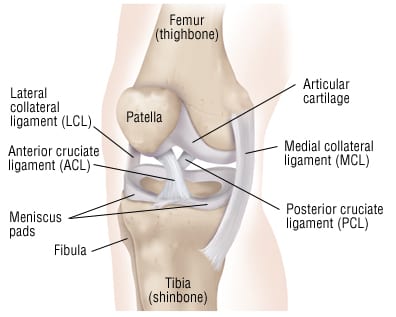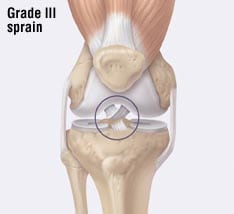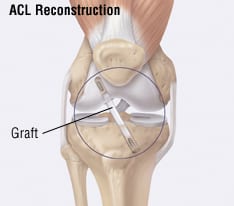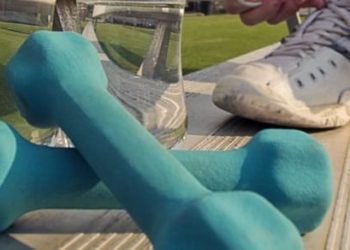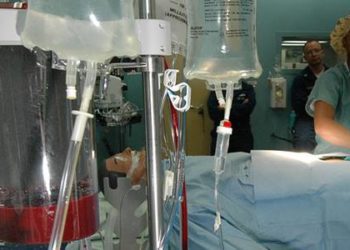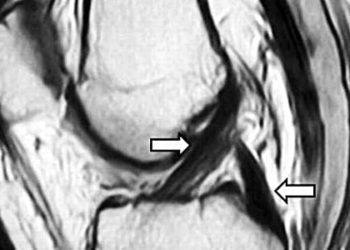Patient Basics: ACL (Anterior Cruciate Ligament) Injuries
Originally published by Harvard Health.
What Is It?
Ligaments are tough bands of fibrous tissue that connect two bones. The anterior cruciate ligament (ACL) and the posterior cruciate ligament (PCL) are inside the knee joint. These ligaments connect the thigh bone (femur) and the large bone of the lower leg (tibia) at the knee joint. The ACL and PCL form an “X” inside the knee that stabilizes the knee against front-to-back or back-to-front forces.
An ACL injury is a sprain, in which the ligament is torn or stretched beyond its normal range. In almost all cases, when the ACL is torn, it’s almost always due to at least one of the following patterns of injury:
- A sudden stop, twist, pivot or change in direction at the knee joint — These knee movements are a routine part of football, basketball, soccer, rugby, gymnastics and skiing. For this reason, athletes who participate in these sports have an especially high risk of ACL tears.
- Extreme hyperextension of the knee — Sometimes, during athletic jumps and landings, the knee straightens out more than it should and extends beyond its normal range of motion, causing an ACL tear. This type of ACL injury often occurs because of a missed dismount in gymnastics or an awkward landing in basketball.
- Direct contact — The ACL may be injured during contact sports, usually during direct impact to the outside of the knee or lower leg. Examples are a sideways football tackle, a misdirected soccer kick that strikes the knee or a sliding tackle in soccer.
Like other types of sprains, ACL injuries are classified by the following grading system:
- Grade I — A mild injury that causes only microscopic tears in the ACL. Although these tiny tears may stretch the ligament out of shape, they do not affect the overall ability of the knee joint to support your weight.
- Grade II — A moderate injury in which the ACL is partially torn. The knee can be somewhat unstable and can “give way” periodically when you stand or walk.
- Grade III — A severe injury in which the ACL is completely torn through and the knee feels very unstable.
Overall, most ACL injuries are severe Grade IIIs, with only 10% to 28% being either Grade I or Grade II. Currently, between 100,000 and 250,000 ACL injuries occur each year in the United States, affecting approximately one out of every 3,000 Americans. Although most of these injuries are related to athletic activities, especially contact sports, about 75% occur without any direct contact with another player.
Women who play contact sports injure their ACLs about seven times more often than men who play such sports. So far, sports medicine experts have not been able to determine why women athletes have a higher risk of ACL injuries. Some researchers believe it’s related to a slight difference in the anatomy of the knee in males and females. Others blame it on the effects of female hormones on body ligaments. Still others point to differences between females and males in skill, training, conditioning or even athletic shoes.
Symptoms
Symptoms of an ACL injury can include:
- Feeling a “pop” inside your knee when the ACL tears
- Significant knee swelling and deformity within a few hours after injury
- Severe knee pain that prevents you from continuing to participate in your sport (most common in partial tears of the ACL)
- No knee pain, especially if the ACL has been completely torn and there is no tension across the injured ligament
- A black and blue discoloration around the knee, due to bleeding from inside the knee joint
- A feeling that your injured knee will buckle, “give out” or “give way” if you try to stand
Diagnosis
In diagnosing an ACL sprain, your doctor will want to know exactly how you hurt your knee. He or she will ask about:
- The type of movement that caused the injury (knee twist, sudden stop, pivot, direct contact, hyperextension)
- Whether you felt a “pop” inside your knee when the injury happened
- How long it took for swelling to appear
- Whether severe knee pain sidelined you immediately after the injury
- Whether your knee immediately felt unsteady and could not bear weight
Also, if you are an athlete who hurt your knee while you were training or competing in a sport, your doctor may want to contact your coach or trainer to get an eyewitness account of your injury.
The doctor will examine both your knees, comparing your injured knee with your uninjured one. He or she will check your injured knee for signs of swelling, deformity, tenderness, fluid inside the knee joint, and discoloration. The doctor also may check your knee’s range of motion if it’s not too painful or too swollen, and will pull against the ligaments to check their strength. To do this, the doctor will ask you to bend your knee and he or she will gently pull forward on your lower leg. If your ACL ligament is torn, when your lower leg is moved it will create the appearance of an “underbite” or a protruding “lower lip” of the knee. The more your lower leg can be displaced forward from its normal position, the greater the amount of ACL damage and the more unstable your knee.
If the physical examination suggests that you have a significant ACL injury, your doctor may order a magnetic resonance imaging (MRI) scan of your knee joint or perform camera-guided surgery (arthroscopy) to inspect the damage to your ACL. For diagnosing partial ACL tears, arthroscopy is usually more efficient than MRI.
Expected Duration
How long you have problems depends on the severity of your injury, your rehabilitation program and the types of sports you play. In most cases, full recovery takes 4 to 12 months.
Prevention
To help prevent sports-related knee injures, you can:
- Warm up and stretch before you participate in athletic activities.
- Strengthen the muscles around the knee through an exercise program.
- Avoid sudden increases in the intensity of your training program. Never push yourself too hard, too fast. Increase your intensity gradually.
- Wear comfortable, supportive shoes that fit your feet and fit your sport. If you have problems in foot alignment that might increase your risk of a twisted knee, ask your doctor about shoe inserts that can correct the problem.
- If you play football, ask your sports-medicine doctor or athletic trainer about specific types of shoe cleats that may help to reduce your risk of knee injuries.
- If you ski, use two-mode release bindings that are installed and adjusted properly. Make sure that the binding mechanism is in good working order and that your boots and binding are compatible.
Treatment
For Grade I and Grade II ACL sprains, initial treatment follows the RICE rule:
- Rest the joint
- Ice the injured area to reduce swelling
- Compress the swelling with an elastic bandage
- Elevate the injured area
Your doctor also may suggest that you wear a knee brace, and that you take a nonsteroidal anti-inflammatory drug, such as ibuprofen (Advil, Motrin and others), to relieve pain and ease swelling. As your knee pain gradually subsides, the doctor will have you start a rehabilitation program to strengthen the muscles around your knee. This rehabilitation should help to stabilize your knee joint and prevent it from being injured again.
Treatment depends on your activity level. Surgery may be used for those needing to return to sports that involve pivoting and jumping. Initially, Grade III injuries are also treated with RICE, bracing and rehabilitation. Once swelling subsides, the torn ACL may be reconstructed surgically using either a piece of your own tissue (autograft) or a piece of donor tissue (allograft). When an autograft is done, the surgeon usually replaces your torn ACL with a portion of your own patellar tendon (tendon below the kneecap) or a section of tendon taken from a large leg muscle. Currently, almost all knee reconstructions are done using arthroscopic surgery, which uses smaller incisions and causes less scarring than traditional open surgery.
When To Call A Professional
Call your doctor immediately if your knee becomes swollen or deformed, even if it is not painful. This is especially important if you cannot bear weight on your injured knee or if the knee feels as if it will buckle or “give out.”
Prognosis
About 90% of patients with ACL injuries fully recover, as long as they faithfully follow a good rehabilitation program. As a long-term complication, some patients with Grade III ACL injuries may eventually develop symptoms of osteoarthritis in the injured knee joint. According to one study, 50% to 60% of patients who suffered a severe ACL sprain showed X-ray evidence of knee osteoarthritis within 5 years after their ACL injury.
Additional Info
National Institute of Arthritis and Musculoskeletal and Skin Diseases
Information Clearinghouse
1 AMS Circle
Bethesda, MD 20892-3675
Phone: (301) 495-4484
Toll-Free: (877) 226-4267
Fax: (301) 718-6366
TTY: (301) 565-2966
http://www.niams.nih.gov/
National Rehabilitation Information Center (NARIC)
4200 Forbes Boulevard
Suite 202
Lanham, MD 20706
Phone: (301) 459-5900
http://www.naric.com/naric/
American Orthopedic Society for Sports Medicine
6300 North River Rd.
Suite 200
Rosemont, IL 60018
Phone: (847) 292-4900
Toll-Free: (877) 321-3500
Fax: (847) 292-4905
http://www.sportsmed.org/
American Academy of Orthopaedic Surgeons (AAOS)
6300 North River Rd.
Rosemont, IL 60018-4262
Phone: (847) 823-7186
Toll-Free: (800) 346-2267
Fax: (847) 823-8125
http://www.aaos.org/
National Athletic Trainers’ Association
2952 Stemmons Freeway
Dallas, TX 75247-6196
Phone: (214) 637-6282
Fax: (214) 637-2206
http://www.nata.org/
American Physical Therapy Association
1111 North Fairfax St.
Alexandria, VA 22314-1488
Phone: (703) 684-2782
Toll-Free: (800) 999-2782
Fax: (703) 684-7343
http://www.apta.org/

